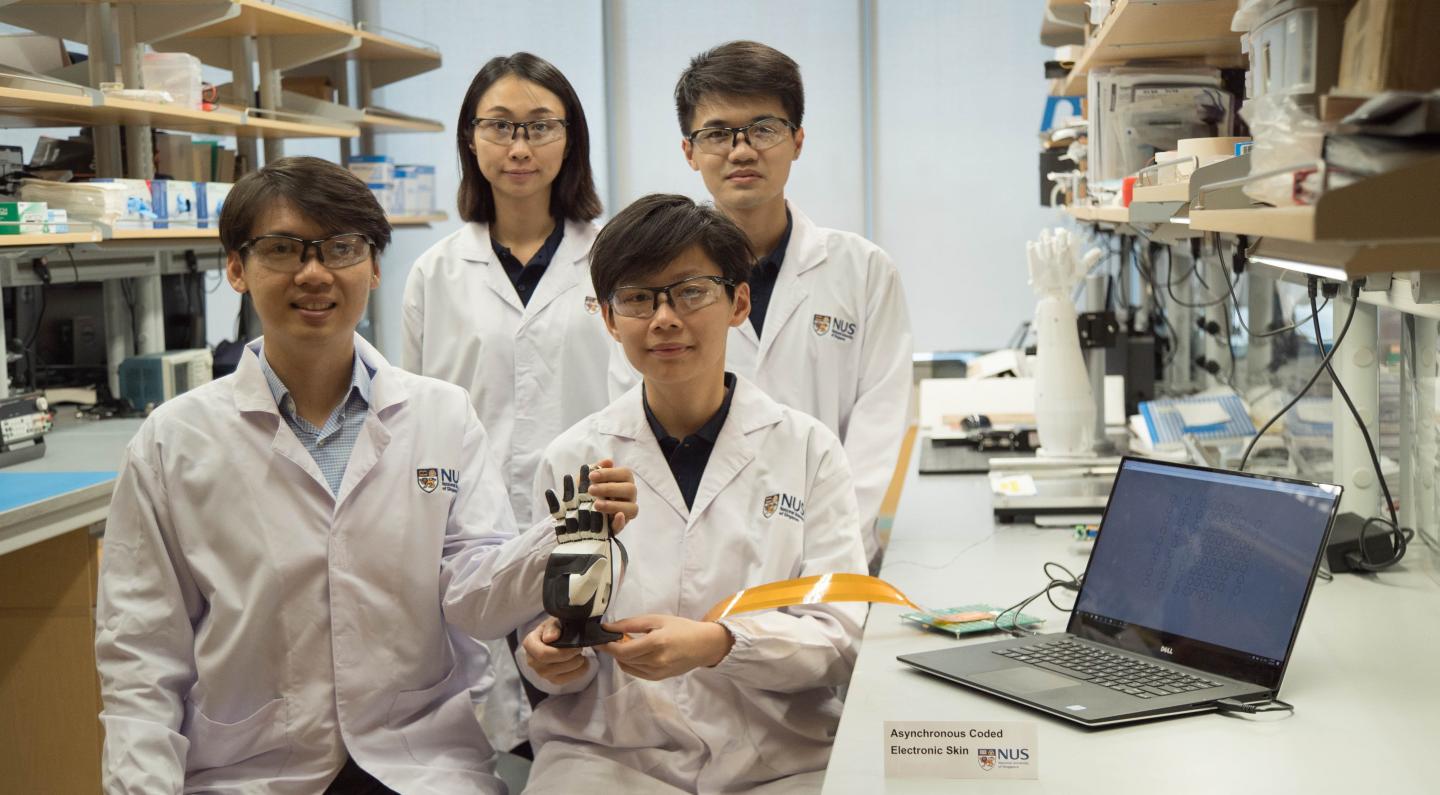
Robots and prosthetics may soon have a sense of touch similar to human skin thanks to e-skin technology developed by researchers at the National University of Singapore.
This is Asynchronous Coded Electronic Skin (ACES), an artificial nervous system that enables “ultra-high responsiveness” that functions like an electronic skin.
Assistant professor Benjamin Tee from the university’s department of material science and engineering, who has been working on developing electronic skin for the past decade, explains why this type of technology is so important for robotics:
“Humans use our sense of touch to accomplish almost every daily task, such as picking up a cup of coffee or making a handshake. Without it, we will even lose our sense of balance when walking. Similarly, robots need to have a sense of touch in order to interact better with humans, but robots today still cannot feel objects very well.”
How the e-skin recreates touch
The ACES electronic nervous system detects signals in a similar way to the human sensor nervous system, through a network of sensors connected via a single electrical conductor.
It also improves upon existing e-skin that has interlinked wiring systems, making them sensitive to damage or difficult to scale up.
How well do you really know your competitors?
Access the most comprehensive Company Profiles on the market, powered by GlobalData. Save hours of research. Gain competitive edge.

Thank you!
Your download email will arrive shortly
Not ready to buy yet? Download a free sample
We are confident about the unique quality of our Company Profiles. However, we want you to make the most beneficial decision for your business, so we offer a free sample that you can download by submitting the below form
By GlobalDataAccording to researchers, ACES is able to detect touch more than 1,000 times faster than the human sensory nervous system, capable of differentiating physical contact received by different sensors in less than 60 nanoseconds, the fastest ever achieved for an e-skin technology.
It can also accurately identify the shape, texture and hardness of objects within 10 milliseconds, ten times faster than the blinking of an eye.
Another important characteristic for e-skin is durability as they soften come into the physical contact with different objects. Although all the sensors are connected to a central electrical conductor, they operate independently, meaning that if one breaks, the others can continue operating unaffected, meaning the system as a whole is less vulnerable to damage.
Professor Tee explains that the technology has applications in robots, prosthetic devices and other human machine interfaces:
“ACES can be easily paired with any kind of sensor skin layers, for example, those designed to sense temperatures and humidity, to create high performance ACES-enabled electronic skin with an exceptional sense of touch that can be used for a wide range of purposes.”
When paired with different materials, this opens up a range of applications. For example, combining the technology with a layer of self-healing and water-resistant sensor skin, also recently developed by the team, creates an electronic skin that can self-repair, like the human skin. This could be used to develop more realistic prosthetic limbs.
Read more: 3D printed prosthetic leg socket tracks calories burnt in style







